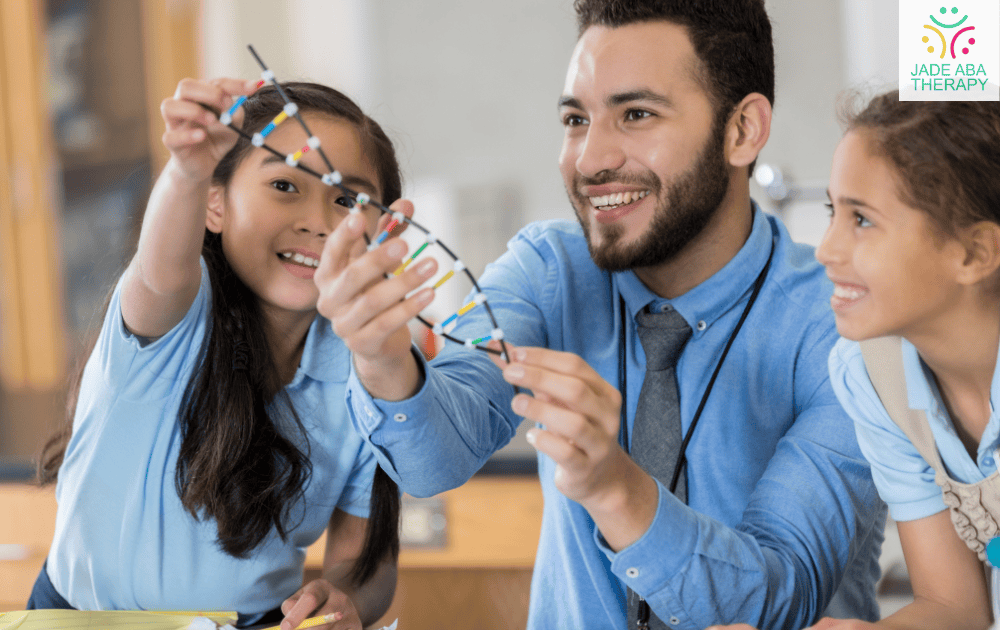The Picture Exchange Communication System (PECS) is a robust communication approach that aims to give individuals with ASC and limited or no verbal communication the ability to express their needs and desires. Developed in the United States in 1985 as part of the Delaware Autism Program, PECS is a modified applied behavior analysis program designed for early nonverbal symbolic communication training.
By using visual symbols, PECS provides an alternative means of communication that can be easily understood and used by both the individual and their communication partner.
PECS operates within natural settings such as classrooms and homes, creating a conducive environment for learning and practicing communication skills.

Development and Principles
PECS consists of six phases that gradually build on each other, providing a structured framework for communication development. In the initial stages, the user, communication partner, and physical prompter work together to facilitate the exchange of pictures.
As the individual becomes more proficient, the physical prompter becomes unnecessary, and the user gains greater independence in using the system.
The underlying principles of PECS include the following:

By utilizing these principles and following the structured phases of PECS, individuals with limited or no verbal communication can develop functional communication skills and enhance their overall quality of life.
Training and Implementation
To effectively utilize the Picture Exchange Communication System (PECS), it is important to understand the training required, consider the cost implications, and implement the system in a way that maximizes its benefits.
Many professionals have received training in the Picture Exchange Communication System (PECS) to support individuals with communication challenges, particularly those on the autism spectrum. These professionals include speech pathologists, occupational therapists, psychologists, physiotherapists, social workers, parents, and teachers.
When seeking assistance, inquire about the professional’s experience and training in PECS to ensure they have the necessary expertise.
Cost Considerations
The implementation of PECS may involve some initial costs, especially if parents choose to attend specialized workshops. However, ongoing costs associated with PECS are generally low.
In 2022, the cost of a two-day PECS basic training workshop for professionals was approximately $695, while for parents, it was around $440. It is worth noting that these prices are subject to change, so it is advisable to check the current rates when considering training options.
In some cases, the cost of using the PECS system may be eligible for funding or reimbursement.
For example, in Australia, parents can inquire with the National Disability Insurance Scheme (NDIS) to explore the possibility of including the cost of using PECS in their children’s NDIS plans. Contacting the relevant authorities or organizations can provide further information on potential financial support.
Implementing PECS Effectively
Implementing the Picture Exchange Communication System (PECS) requires careful planning and execution to ensure its effectiveness.
While it can be challenging, guidance from an experienced Speech Language Pathologist (SLP) can be invaluable in this process. SLPs have expertise in language development and communication strategies and can provide tailored support and recommendations.
To implement PECS effectively, it is important to establish a trained team comprising professionals, caregivers, and educators who are well-versed in the system. The team should collaborate closely and follow the recommended guidelines and strategies to create a consistent and supportive communication environment.
National Autism Resources offers instructional materials that can assist trained team members in implementing picture communication effectively. These resources provide visual aids, strategies, and tips to support the successful implementation of PECS.

Phases of the PECS Program
The Picture Exchange Communication System (PECS) follows a structured program consisting of six phases. Each phase builds upon the previous one, gradually progressing towards more advanced communication skills.
Let’s take a closer look at each of the different phases of the PECS program.
- Phase I: In the initial phase, known as enticement, individuals are motivated to initiate communication by exchanging a single picture card for a desired item or activity. The focus is on establishing the foundation of the PECS system.
- Phase II: The second phase emphasizes increasing independence. Individuals learn to approach a communication partner, hand them a picture card, and wait for the partner to respond by providing the requested item. This phase aims to promote independent communication initiation.
- Phase III: Picture selection is the focus of Phase III. Individuals learn to select from an array of picture cards to make more specific requests. This phase expands their vocabulary and allows for more options in communication.
- Phase IV: Combining pictures with carrier phrases is the objective of Phase IV. Individuals are taught to construct simple sentences by combining a picture card with a sentence strip. This phase helps in developing sentence structure and expressive language skills.
- Phase V: In Phase V, individuals learn to respond to specific questions. They are trained to answer questions such as “What do you want?” or “What do you see?” by using appropriate picture cards. This phase encourages the development of receptive and expressive language skills.
- Phase VI: The final phase focuses on introducing commenting behavior. Individuals are taught to use picture cards to make comments about their environment, express preferences, or share information. This phase enhances their ability to engage in social communication.
Success with Children and Adults
PECS has been widely implemented with children and adults who have a range of Speech, Language, and Communication Needs (SLCN), particularly those with Autism Spectrum Conditions and individuals with limited verbal communication.
Numerous success stories highlight the effectiveness of PECS in improving communication and enhancing the quality of life for individuals using this system.
Children introduced to PECS have experienced significant progress in their communication skills. By using picture symbols to express their needs and desires, they can communicate with their caregivers, teachers, and peers effectively. This not only enhances their ability to participate in daily activities but also boosts their self-confidence and independence.
PECS has also shown positive results when applied to adults with communication difficulties. By utilizing the system, adults who faced challenges in expressing themselves have gained a means of communication, allowing them to interact with others more effectively.
This has opened up new opportunities for social interactions, vocational pursuits, and independent living.